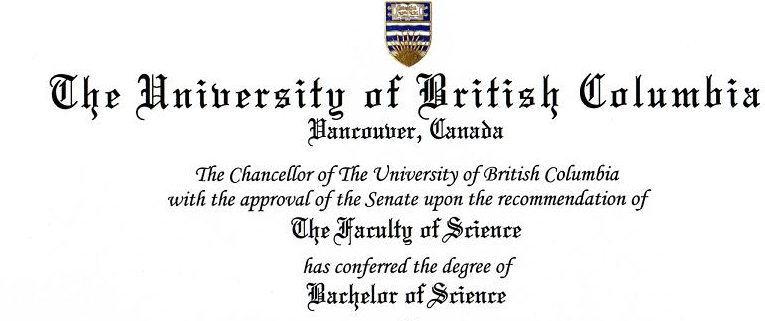A lot of law students today are apprehensive and troubled about the prospect of change in the legal sector and what it means for your career plans. These are very understandable reactions to a confusing and uncertain situation.
Before you went to law school, you probably didn’t have a very clear sense of what a legal career looked like, unless you have friends or family members who are lawyers. Once you’re in law school for a few months, the paradigm of what a “good” law career is supposed to look like becomes pretty clear in your mind: summer at a good firm, article at the same good firm, get hired back, work hard, make partner.
Now, things are changing, and the rug is being pulled out. You’re being told that the firms where you should go to follow that well-worn path have flattening revenues, hiring is down, maybe some of them will even go under like Heenan Blaikie, maybe some of them will change their business model altogether. What are you supposed to do? How are you supposed to make a living? Try to get a foot in the door at one of these new weird businesses like Axiom? Create your own startup, and risk failing?
Why, why, why do you have to deal with all this change, when five or ten or fifteen years ago all you would have needed to do was to get on that nice, predictable path and stop worrying?
It is very understandable, and completely rational, to have this reaction to change in a system when you have invested a lot of time, money and effort on the expectation that the system will continue to be roughly as it has been for the last couple of decades.
But I’d like to ask you to indulge me for a couple of minutes and try a thought experiment.
Imagine that we live in a world that I am going to call “Scenario A.” In Scenario A, lawyers have a diverse range of career options. These options are enabled in part by technology that enables people to work together without physically being together. Also, lawyers don’t do routine, automatable, high-volume tasks, because technology has made it completely unnecessary and uneconomical for highly educated humans to do that.
Lawyers have the option to work for companies that allow them flexibility, permit them to do a large portion of work at home, and let them take time out and mini-sabbaticals – like Axiom or Cognition. They can work for publicly traded law firms where they participate in the growth of the firm from their first day on the job through stock-based compensation, and where professional managers handle the management functions while lawyers concentrate on doing the legal services (just as, at Air Canada, pilots do the plane flying and leave it to the trained management experts to do the management of the company). They can work for multi-disciplinary one-stop shops where lawyers, accountants, IT professionals, engineers, counselors, financial advisors and any number of other experts cooperate and share the profits. They can work as employees of tech companies capitalizing on opportunities in the legal sphere, like LegalZoom and Knomos, which are growing fast and need employees with legal training and expertise. And those daring entrepreneurial types who want to start their own businesses providing legal services can seek investment from venture capital / private equity firms to get their companies started.
Now imagine that this world, Scenario A, is the status quo. But all of a sudden the status quo faces change. After all, we do live in an ever-changing world. We are shifting (let’s imagine) from Scenario A to a situation that I will call “Scenario B.”
Scenario B comes into being in large part because of regulatory changes. New rules come in about who can provide legal services. Under these new rules, no business providing legal services can be owned by anyone other than a licensed and regulated lawyer. Businesses that provide legal services cannot have any equity investors who are not licensed lawyers. Fees for legal services can’t be shared with anyone except licensed lawyers. No one can control a legal services firm except licensed lawyers. That means no professional managers (unless they are licensed lawyers), and no outside experts on the board of directors (unless they are licensed lawyers). Only law firms structured as partnerships in which all the partners are lawyers are allowed to provide legal services.
Things change fast.
The only entities allowed to supply the enormous demand for legal services now are these new lawyer-owned “law firms.” The law firms quickly realize that a great way to maximize profits for the partners is to charge for the firm’s services by the hour, and hire a large number of salaried “associates” whose services they can bill out at an expensive rate while paying them a fixed annual amount (maybe with a small variable bonus at the end of the year so they won’t quit in the middle of the year). It is also good for the partners’ bottom line if they make sure each associate “bills” the highest possible number of hours.
Law firms are keen to hire lots of law school graduates so that they can maximize the billable hours they can charge out to clients. They splurge to attract law students, taking them out for expensive meals and giving them goodies like coffee mugs and pens. This is kind of fun for law students.
Law firms start moving routine, high-volume tasks away from technology that can do the work very quickly and efficiently to teams of associates who do it more slowly, but much more profitably – from the law firms’ standpoint, because those hours are all billable hours. Even better (better for law firm profit, that is), there’s no need to invest time and money in training or mentoring the associates or develop their professional skills before the firm can get profit out of them. Associates can do this routine stuff without any training. They are highly motivated to do it diligently and for many hours a day, because that means more billable hours and a better chance of keeping their jobs.
Law firm partners aren’t bad people. They’re just rational self-interest-maximizers like the rest of us. They understand that the system makes more money for them if they make certain choices. They don’t even really like the net outcome of the choices that much. But if they didn’t maximize their profits a competitor firm would, and they’d fall behind and risk going out of business.
The associates are highly motivated to work hard and work many hours. But the motivation is almost entirely extrinsic (fear and greed), and associates take little real pride in their work. The overriding pressure is to work a lot of hours, translating into a lot of dollars for the partners. The extremely long work hours wreck their personal lives. Also, they sense that their interest in generating high billable hours is misaligned with their clients’ interest in getting efficient service. And they feel that their intelligence and education are wasted on the dumb but demanding tasks they are doing. So, the associates are not happy.
Obviously the clients aren’t tremendously thrilled either. Imagine getting a bill for hundreds of hours of associate time for due diligence or document review that in the old days, in Scenario A, a computer or legal process outsourcer could have done better, faster and cheaper. And then try explaining it to your boss, who expects you to stick within your budget.
To counteract the unhappiness of associates and ensure a steady supply of new ones (needed to replace the large number who quit each year immediately after the annual bonus is paid), law firms raise the salaries that they pay to incoming associates.
Then law schools raise their tuition, because starting salaries have gone up, so, hey, it seems fair enough to charge more for an entry ticket to a high starting salary.
That happens several times.
As a consequence, law firms keep raising the billable rates for the associates’ time, so that the salary increases don’t hit the partners’ bottom line. They also have to cover the cost of the billed hours that the clients refuse to pay because the billable rate is stupid. When clients call partners they know and trust to point out that the billable rate is stupid, the partners can’t really disagree. So they write off bills. And that has to be made up somehow.
So, the cost of legal services at the high end keeps going up. And, inevitably, that also drives up the cost at the low end too. Many ordinary people who need help from lawyers can’t afford it. Law graduates who want to help ordinary people with their legal problems – who went to law school because that’s what they dreamed of doing – can’t afford to do that, because they have to pay back those big tuition bills, driven, if you trace it back, by the high rates at the expensive law firms.
Change is hard. If you lived in Scenario A and had to change to Scenario B, I think we can agree that would be really, really hard. Almost unbearable.
More than that: it would also be just plain bad – for you, for society, for everything that the legal profession is supposed to be about.
Actually, as you probably noticed, we currently live in Scenario B.
But things are changing. It looks like we could be on the road to something more like Scenario A.
Change of any kind is hard and frightening. But I’d rather see change from B to A than the other way around. What about you?











